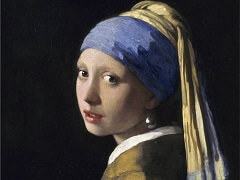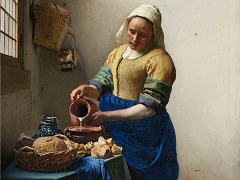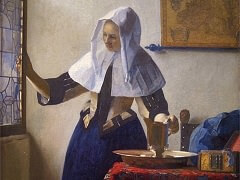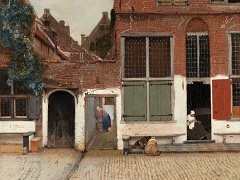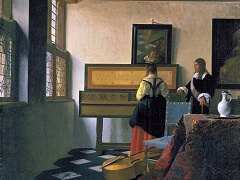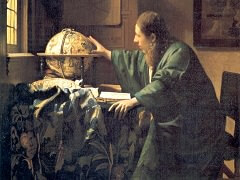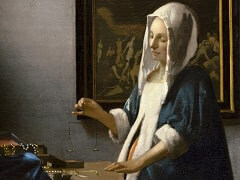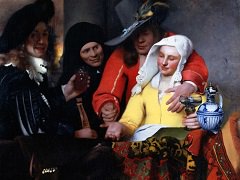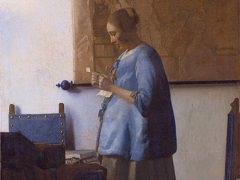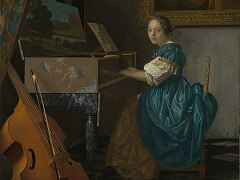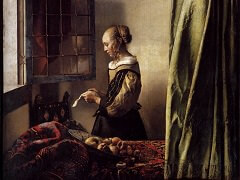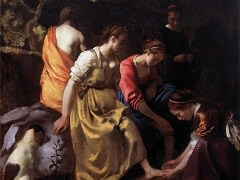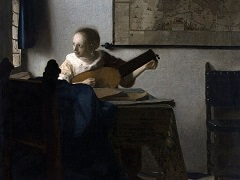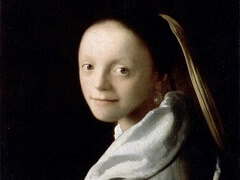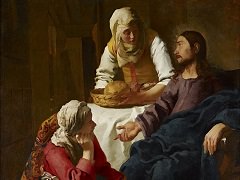Allegory of Faith, 1671 by Johannes Vermeer

In painting Allegory of Faith, Vermeer returned to the compositional format he so successfully devised for The Art of Painting. Nevertheless, a profound difference exists between the two. Whereas the earlier painting functions as both a realistic portrayal of an artist in his studio and as an allegory, the scene unfolding beyond this curtain can only be understood in allegorical terms. Indeed, a number of iconographic elements integral to the meaning of the allegory seem out of place within this carefully constructed Dutch interior, among them: the snake crushed by a large cornerstone, which represents Christ overcoming evil; the woman's gesture of bringing one hand to her breast to indicate her true faith; and the glass ball suspended from the ceiling, an object that symbolizes man's capacity to believe in God.
Vermeer's reasons for painting this allegory are not known. He may have executed it for the Jesuit Order in Delft or for a wealthy Catholic patron. He derived many of the theological concepts from descriptions of the allegorical figure of Faith in the 1644 Dutch edition of Cesare Ripa's Iconologia, a book particularly admired by the Jesuits. Vermeer, however, amplified Ripa's comments by including objects from his own household, for example, the ebony crucifix and the gilt leather panel. Also listed in the inventory of his collection was a painting of the Crucifixion, which must be the work by Jacob Jordaens he has depicted hanging on the rear wall.

